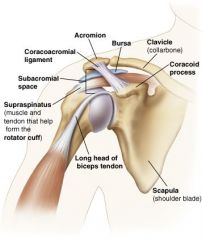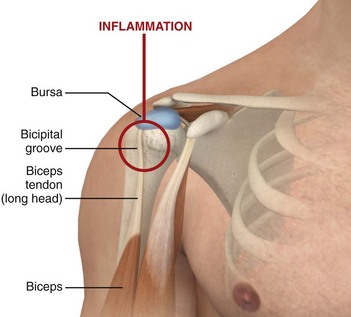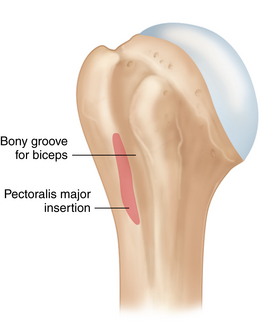Bicipital Groove Landmark
The technique of hybrid double plate osteosynthesis using the bicipital groove as anatomic landmark may re establish shoulder function after complex proximal humerus fractures in two dimensions.
Bicipital groove landmark. Methods in randomly chosen shoulder specimens donors gave. The bicipital groove intertubercular groove sulcus intertubercularis is a deep groove on the humerus that separates the greater tubercle from the lesser tubercle the bicipital groove lodges the long tendon of the biceps brachii between the tendon of the pectoralis major on the lateral lip and the tendon of the teres major on the medial lip. Relative to the intramedullary axis quantified the reliability of using the bicipital groove as an anatomic landmark and compared this reliability with that of the conventional technique that uses a fixed average angle relative to the epicondylar axis to establish humeral head retroversion. We evaluated the course of the bicipital groove as it moves distally along the humerus.
Cc by 4 0 content may be subject to. 1 according to our findings when the surgeon is implanting a prosthesis using the posterior edge of the bicipital groove as a landmark the prosthesis may be. Bicipital groove is used as an anatomical landmark for reduction of the anterior column and a one third tubular plate is placed into the groove in an inverted fashion. Whereas the bicipital groove is used as an anatomical landmark to restore humeral head retroversion when treating complex proximal humeral fractures with arthroplasty 12 13 it has not been taken into account as landmark for the reconstruction with plate osteosynthesis.
The bicipital groove as a landmark for reconstruction of complex proximal humeral fractures with hybrid double plate osteosynthesis pdf available via license. However when fracture surgery is performed only the distal portion of the bicipital groove may be available for reference. We quantified the three dimensional geometry of the bicipital groove in 49 dried humeri relative to the intramedullary axis quantified the reliability of using the bicipital groove as an anatomic landmark and compared this reliability with that of the conventional technique that uses a fixed average angle relative to the epicondylar axis to. It also transmits a branch of the anterior humeral.
The bicipital groove offers a useful landmark for placement of the lateral fin of the prosthesis. The lateral fin of the prosthesis should be positioned just at the posterior aspect of the groove for a retroversion between 30 and 40 which has been recommended and widely used. Firstly the anatomy is restored due to a proper reduction based on intraoperative landmarks.


















